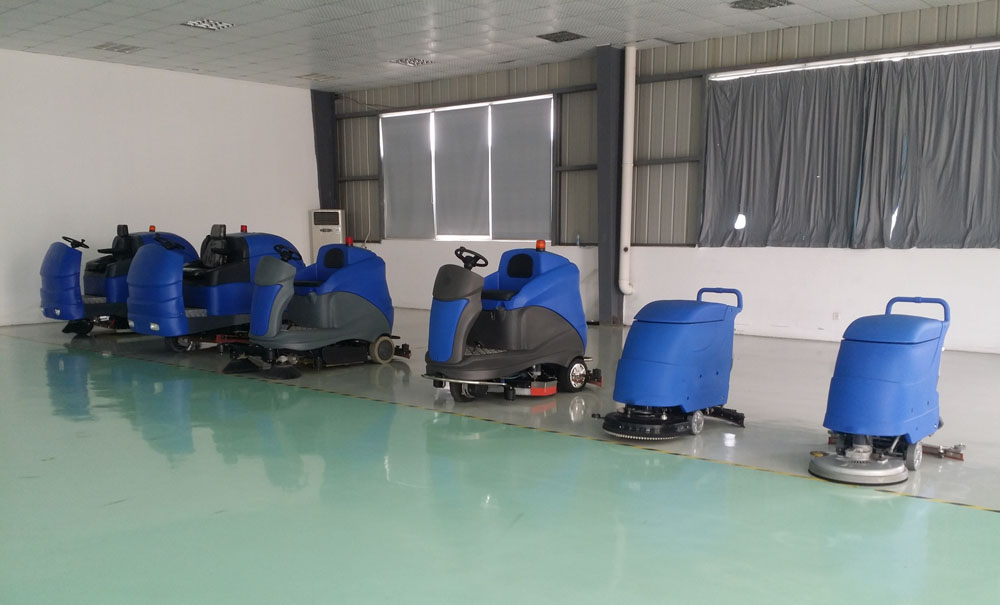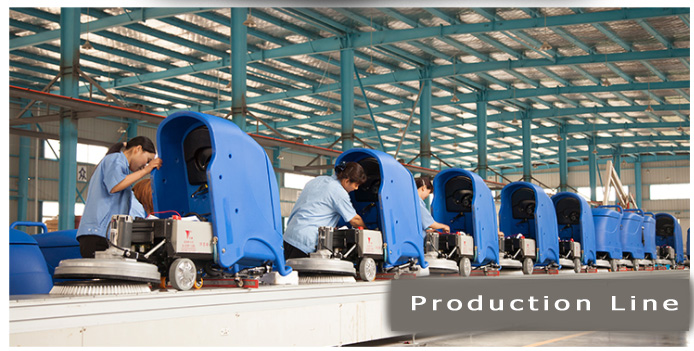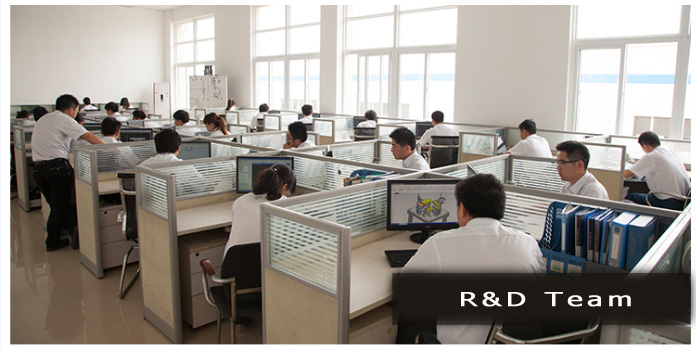
NEWS |
Group NewsWhat is a Floor ScrubberFloor scrubber is a floor cleaning device. It can be simple tools such as floor mops and floor brushes, or in a form of walk-behind or ride-on machines to clean larger floor areas by injecting water with cleaning solution, scrubbing, and lifting the residuals off the floor.With the advancement in robotics, autonomous floor-scrubbing robots are available as well.Automatic floor scrubbers, also known as auto scrubbers, are a type of floor cleaning machine that are used to scrub a floor clean of light debris, dust, oil, grease or floor marks. These machines have either rotary(disk) or cylindrical scrubbing head and an automated system for dispensing cleaning solution and then vacuuming it up. So, in one pass over the floor, a user can dispense cleaning, scrub it into the floor, then vacuum it all up with an autoscrubber squeegee attachment at the back of the machine. Auto scrubbers have a separate dispensing(solution tank) tank and a collection(recovery tank) tank to keep your clean water from your dirty water and can be categorized into one of two main types: walk behind or riding. Floor Scrubbers are a more hygienic alternative to traditional cleaning methods such as a mop and bucket. Environmentally safe soaps can be used in conjunction with a reduced water system to save on both the amount of chemicals released into the environment as well as the amount of gray water produced. Some floor scrubbers are even capable of cleaning without a water and chemical system at all. Most autoscrubbers can't reach edges, corners, clean under obstructions such as drinking fountains, and can't fit into alcoves. Therefore, mopping is needed to clean areas the autoscrubber can't reach. Some manufacturers now produce Floor Scrubbers with Orbital / Oscillating brush decks allowing edges, corners and overhangs to be fully cleaned. Modern floor scrubbers have a pre-sweep option that removes the need to sweep the floor before scrubbing. The pre-sweep brush head is placed in front of the vacuum system to collect dust and debris before it can block the vacuum system. In the past it was important to sweep the floor before scrubbing to remove any debris and dust that could clog the vacuum hose or build up in the vacuum motor, which can decrease performance. If this happens, the vac hose may need to be removed to clear the obstruction and/or the vac motor may need to be blown out with compressed air. Stripping Solution should never be used as it can cause damage to the solution dispensing system, but can still be vacuumed up by the machine without harm. Occasionally, the solution system should be flushed with water mixed with vinegar to remove any soap and calcium deposits that could build in the solution system. After each use, the dispensing(solution) and especially the collection(recovery)tanks should be emptied and rinsed out to prevent dirt build up. Also, the pads/brushes, vac hose, and squeegee should also be rinsed to prevent dirt build up. The vac motor should be run for several minutes afterwards to remove any moisture that could be present in the vac motor to reduce chances of corrosion that could damage the vac motor. Failure do to this maintenance could cause in a loss of vacuum airflow and increase in costly repairs. When storing an autoscrubber, the solution and recovery tanks should be left open to allow ventilation and to prevent odors from building up Before charging battery-powered machines, check to make sure the water in the battery cells is covering the lead plates before charging. If the water level is low enough to expose the plates, Fill the cell with just enough water until the plates are covered. If batteries are discharged, never add water if the electrolyte is visible above the plates. When charging, the battery compartment should be left open for ventilation as hydrogen gases are emitted from the charging process. After charging, check the battery cells again. The water level should be 1/8 below the bottom of the fill well. If the level is low fill until it is 1/8 below the bottom of the fill well. If a battery is overfilled, the water can overflow which can damage the battery and make a mess. When maintaining deep cycle batteries, distilled water is highly recommended. Never use water with high mineral content.    |